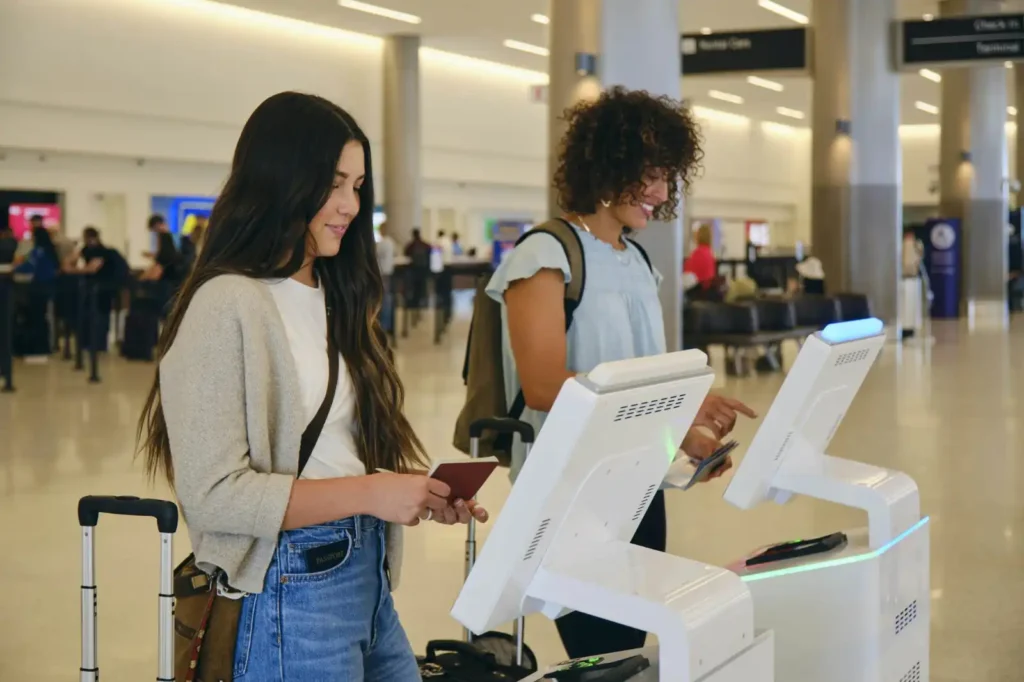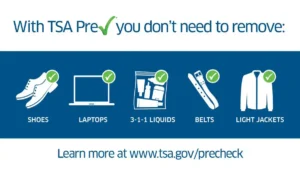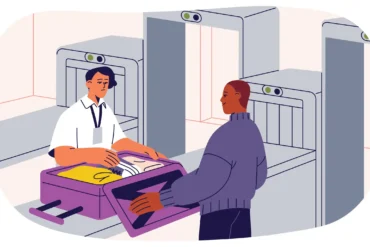Navigating TSA security lines often induces dread among travelers. However, by enrolling in TSA PreCheck, you can significantly reduce both time and hassle during airport security procedures.
But just how much time can you save? Consider this: In March 2023, a staggering 89% of TSA PreCheck passengers spent less than five minutes at airport security checkpoints.
For those with TSA PreCheck, dedicated security lines await, allowing you to keep your shoes on and leave 3-1-1 liquids and laptops in your bags. These perks extend across dozens of airlines and over 200 airports.
Now, let’s address your queries: What exactly is TSA PreCheck, what does it cost, and how can you obtain it without spending a dime?
TSA PreCheck stands as a membership program, granting exclusive access to streamlined security lines at several hundred U.S. airports. Upon approval, members receive a Known Traveler Number—a signal to airlines that you qualify for TSA PreCheck privileges.
Over 80 airlines participate in this program, ensuring a smoother airport screening experience. Simply add your Known Traveler Number to your flight reservations, and behold the coveted “TSA PreCheck” label on your boarding pass. Keep in mind that certain flights may not offer TSA PreCheck benefits, depending on the airline or specific airport procedures.
Remarkably, children under 12 need not secure their own TSA PreCheck membership. As long as they accompany an adult member, they too can glide through the TSA security lanes. Meanwhile, teenagers aged 13-17 can travel alongside their TSA PreCheck-certified parents, provided the PreCheck indicator graces their boarding pass.
TSA PreCheck vs. Global Entry: What’s the Difference
While both TSA PreCheck and Global Entry aim to expedite security checkpoints, each caters to distinct travel scenarios:
- TSA PreCheck simplifies domestic travel, offering dedicated airport security lanes, lower application fees, and several enrollment locations.
- Global Entry, on the other hand, is best for international travelers. Beyond TSA PreCheck benefits, it streamlines the U.S. customs process for those returning from abroad.
Here’s a comparison chart highlighting key aspects of TSA PreCheck and Global Entry:
| Category | TSA PreCheck | Global Entry |
|---|---|---|
| Length of membership | 5 years | 5 years |
| Application fee | $78 ($70 online renewal) | $100 |
| Enrollment centers | 500+ | 100+ |
| Access to TSA PreCheck security lane | Yes | Yes |
| Can bring minor children with you (12 & under) | Yes | No, child must have their own membership |
| Access to expedited U.S. Customs lanes | No | Yes |
| Best for | Domestic travelers | International travelers |

TSA PreCheck Requirements
The TSA PreCheck program is open to U.S. citizens, U.S. nationals, and lawful permanent residents.
Interested travelers must apply online for pre-approval. Once your interview is scheduled, bring an unexpired U.S. government-issued photo identification and proof of citizenship (accepted documents include your passport or a driver’s license and birth certificate).
How Much Does TSA PreCheck Cost?
The benefits sound great, but what is the fee for TSA PreCheck? TSA PreCheck costs $78 for a five-year membership period. After the initial application fee, PreCheck renewal only costs $70 if completed online.
How to Get TSA PreCheck for Free
While paying for TSA PreCheck with your credit card or debit card is an option, you can actually obtain it for free instead of shelling out cash. Here are four ways to achieve this:
- Random Issuance: Some passengers may randomly receive TSA PreCheck as an introduction to its benefits. Consider this a marketing effort by the Department of Homeland Security to encourage sign-ups.
- Military Benefits: Active members of the U.S. Armed Forces can enjoy TSA PreCheck benefits by entering their Department of Defense identification number as their Known Traveler Number. This includes Reserves, National Guard, and cadets or midshipmen attending military academies.
- Reward Redemption: Certain airline and hotel loyalty programs—such as Marriott Bonvoy and United MileagePlus—allow you to redeem miles and points to cover TSA PreCheck application fees.
- Credit Card Perks: Many travel cards reimburse TSA PreCheck application fees every four to five years.
How to Sign Up for TSA PreCheck
TSA PreCheck is open to U.S. citizens and lawful permanent residents. Follow these five simple steps to pre-enroll online and schedule your interview:
- Complete the Questionnaire: Confirm your eligibility for the program by filling out a brief questionnaire.
- List Your Documents: Provide details of the identifying documents you’ll bring to your interview.
- Schedule Your Interview: Look for an email confirming your appointment.
What If Your Application Is Declined?
Getting approved for TSA PreCheck is not guaranteed. Individuals can be declined based on security threat assessments, certain criminal convictions, and similar reasons.
If you’re declined for TSA PreCheck, it is possible to appeal the decision and request reconsideration.
The TSA PreCheck interview usually takes less than 10 minutes. It primarily verifies your identification documents and processes your fingerprints. For most people, you’ll need to bring your driver’s license and passport. However, it’s best to use the interactive guide from the Department of Homeland Security to answer a few quick questions and determine which documents you should bring.
At your appointment, you’ll be required to pay the nonrefundable $78 fee. Payment can be made by credit card, company check, cashier’s check, or money order.
Once approved for TSA PreCheck, add your Known Traveler Number to your existing flight reservations and airline loyalty program profiles. This allows you to use the dedicated TSA PreCheck lanes across the U.S.
Is TSA PreCheck worth it?
Absolutely! This valuable tool saves you time and frustration at airport security. If you’ve ever missed a flight due to long security screening lines, you know how critical it is to get through airport security quickly.
The initial application fee is $78 for the first five years. Subsequent online renewals cost $70 (though you can easily renew for free). Many credit cards will cover the cost for you. Even if you pay for it yourself, the fee breaks down to less than $2 per month, which is surely worth it — even for occasional travelers.


















